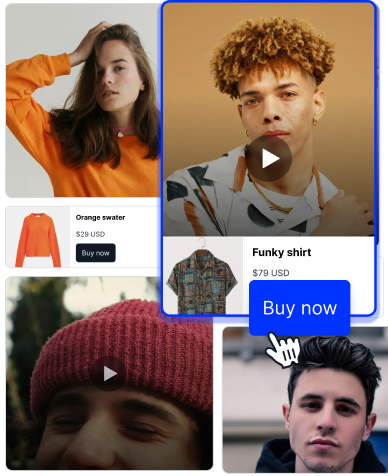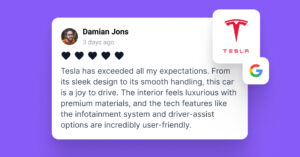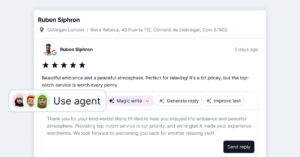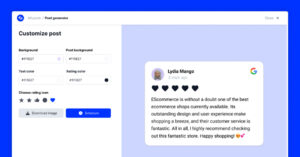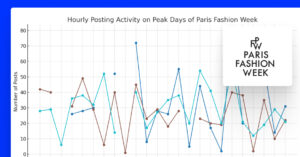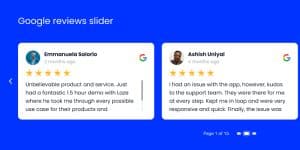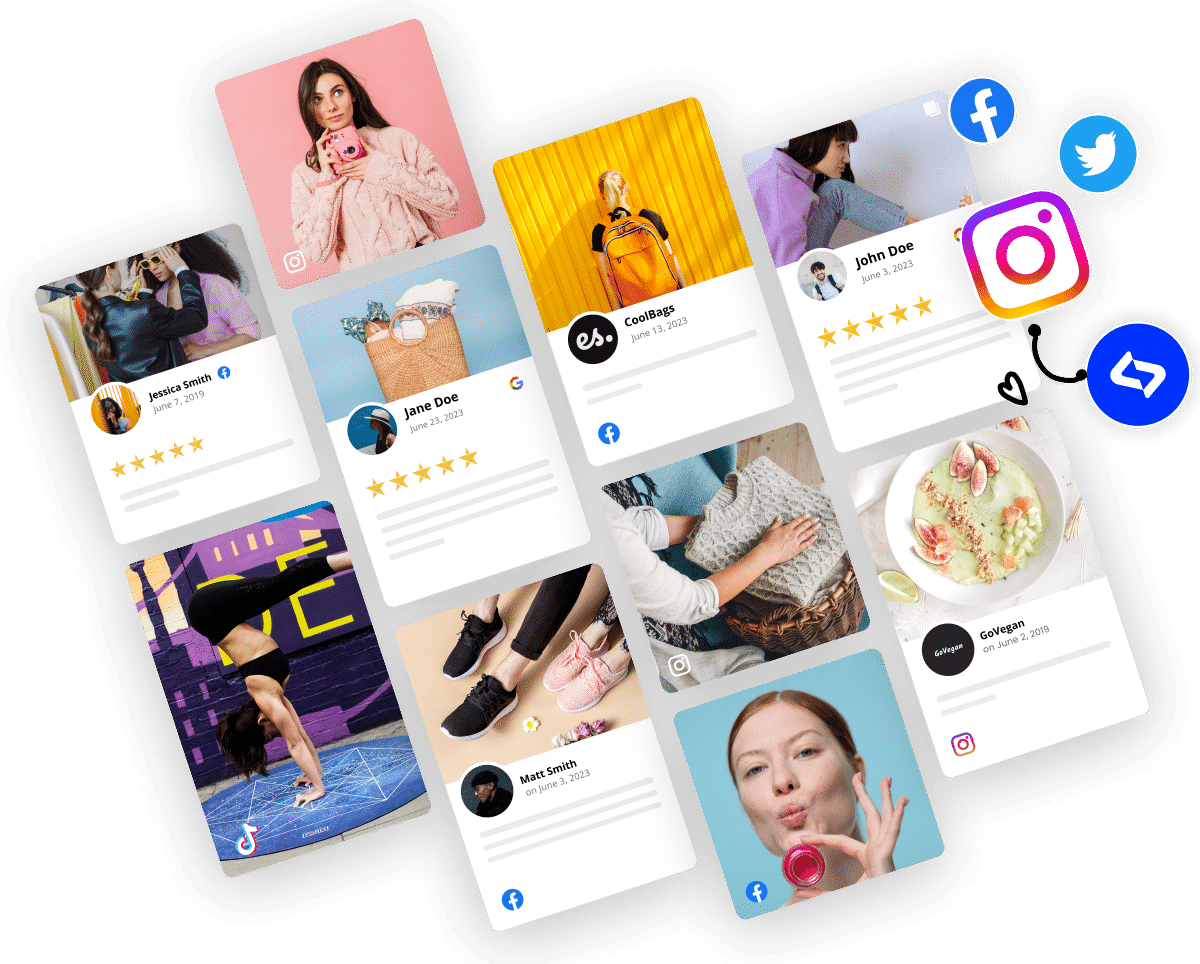Looking for a way to make your online store more interactive and drive sales? A shoppable UGC widget is the solution you need!
These powerful tools make your website more engaging and allow customers to shop directly from real-life content, like Instagram posts and customer reviews.
Effectively, you seamlessly connect users with the products they love, helping you build trust and boost conversions. Don’t trust me? Trust marketers, 93% of which claim that content created by consumers performs better than branded stuff.
Ready to implement shoppable widgets to revolutionize your UGC e-commerce strategy? Keep on reading as I take you through everything you need to know!
What is a shoppable UGC widget?
Shoppable widget is a type of interactive content that allows users to purchase products directly from the content itself, such as social media posts, reviews, or customer photos. This method combines the authenticity of user-created content with the convenience of shoppable links, thus creating a seamless shopping experience.
Therefore, you can link to products in your store by embedding a shoppable widget on your website with images from platforms like Instagram or Facebook.
This means that potential customers can see your products being used in real-life situations, which makes the buying decision easier and more trustworthy. See how this looks like in the live example below:
As such, shoppable UGC bridges the gap between product discovery and purchase by transforming everyday social media content into powerful sales tools, which makes it crucial in the consumer decision-making process for conversion purposes.
There a few types of shoppable widgets that differ based on the content you display or the chosen layouts. Here are the most popular ones:
- Shoppable Google reviews widget – see demo.
- Shop my feed Instagram widget – see demo.
- Shop my Instagram stories widget – see a demo.
Why shoppable widgets are essential for e-commerce brands
Shoppable widgets have become a must-have for e-commerce brands looking to enhance their customer experience and boost sales, as they simplify the shopping journey by turning regular content into a clickable, shoppable content experience.
Here’s why a social shopping widget is so crucial for e-commerce:
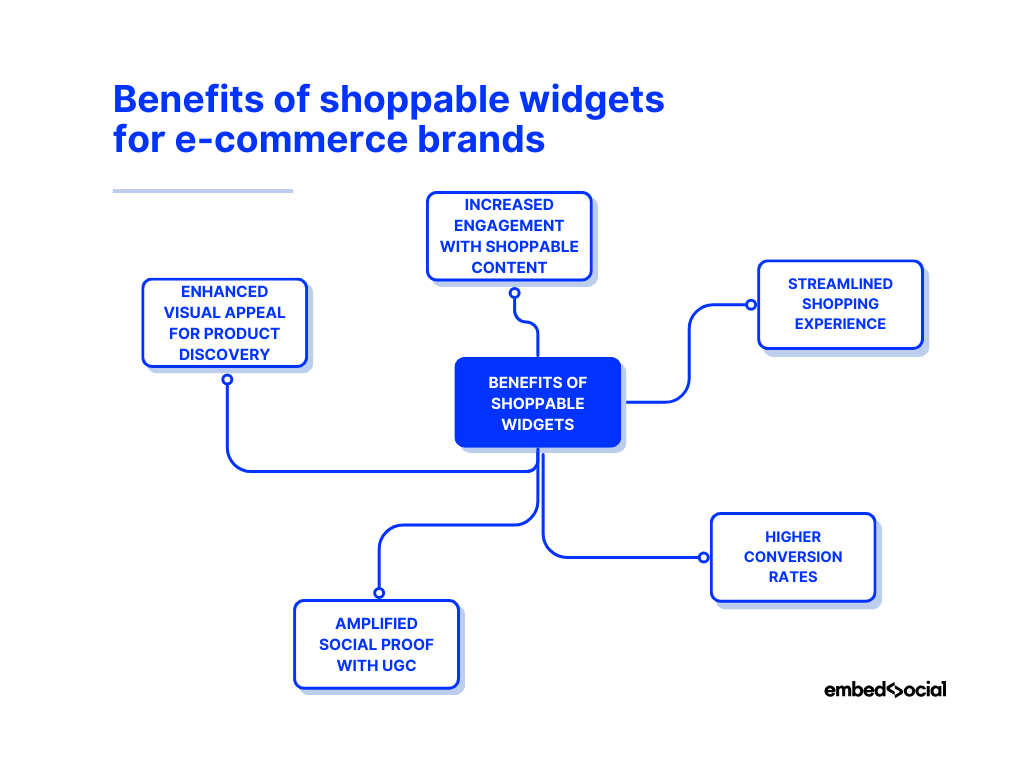
- Increased engagement with shoppable content – users are more likely to interact with engaging, clickable content, leading to longer time spent on site;
- Streamlined shopping experience – customers can purchase directly from the widget without navigating away from the page, reducing friction;
- Higher conversion rates – with fewer steps between discovering a product and buying it, shoppable widgets help increase sales;
- Amplified social proof with UGC – featuring customer photos, reviews, and social media posts within the widget builds trust and credibility;
- Enhanced visual appeal for product discovery – beautiful UGC integrated into your product galleries makes your store more appealing and helps customers find items they love.
As you can see, integrating shoppable widgets creates an engaging, visually appealing, and seamless shopping experience for your customers. This is especially true for fashion UGC, which relies on a visual medium to engage.
Remember: authentic user-generated content from your social media accounts impacts your customers’ faith in your products.
Just take a look at these 20 user-generated content examples to get a glimpse of their marketing power.
Read more:
How to add shoppable UGC to your e-commerce store in 7 simple steps
The simplest and most effective method of adding shoppable UGC to your e-commerce store is via a UGC platform like EmbedSocial.
By doing so, you’ll be able to pull user-generated content from every popular social media platform to create a shoppable widget.
The steps to add these widgets are quite straightforward:
Step 1: Create and log into your EmbedSocial account
First things first, before doing anything else, you need to create your free account and log into the main dashboard, where you can connect your social media accounts and create the Shoppable widgets.
Step 2: Add your source(s) for collecting user-generated content
Next, you have to add a new source (and connect a social media account) from which you’ll pull the UGC you want embedded in your widget.
Navigate to ‘Sources’ (in the left-hand menu) and press ‘Add new source’.
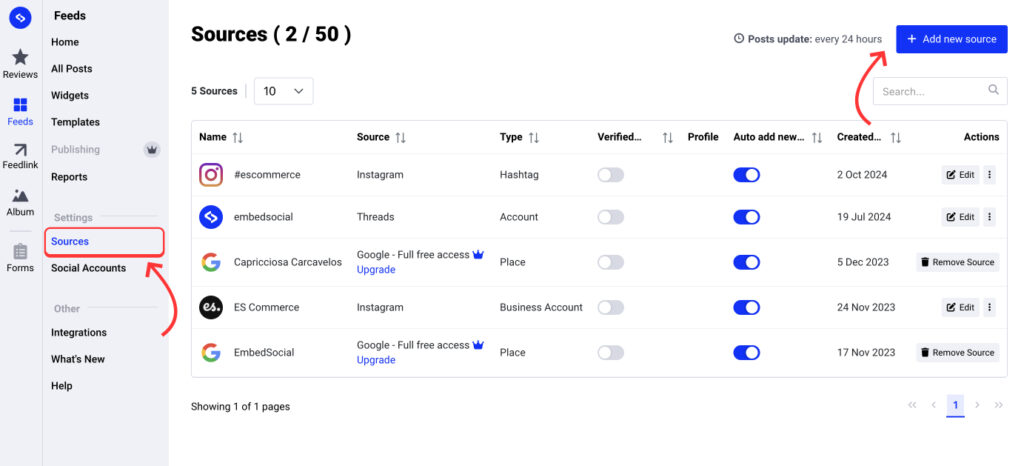
You’ll have to choose the platform you want to display in your feed during this step.
Note: You will have to connect your social media account during this step if you haven’t done so until now. If you choose Instagram, you’ll have to grant the necessary permissions by connecting with your Facebook profile, which manages your Instagram account.
Step 3: Choose your account and pick the source sub-type
If you choose Instagram, you’ll have to pick the source sub-type. In the free version, you can pick an Instagram personal or business account, and you also can connect to a Google business profile to generate Google reviews. For this use case, we show below the steps to choose Instagram as a platform and select the business or personal account from which you want to pull the Instagram posts. Once you connect, just select your Instagram account if you manage more, and click Next.

For paid users: The paid versions include more social media sources and also the ability to generate user-generated posts from people who published content by using a specific hashtag or mentioned your brand on Instagram.
Step 4: Select your widget template
Now you get to choose a layout and continue to the editor to customize the widget. You can choose from Collage, Slider, Feed or a Popup layout. Each can be further designed to fit your branding.

For more specific use-case, feel free to navigate to the widget library where you can find free or paid pre=built templates.
I suggest you go with ‘Shoppable Instagram Widget with Product Cards’ since it works with every type of platforms.
Step 5: Add your product links on each post
Now the fun part. To activate the product cards within the widget that will display product information below each post, just navigate to Cards > Select the shoppable card style, as shown below:
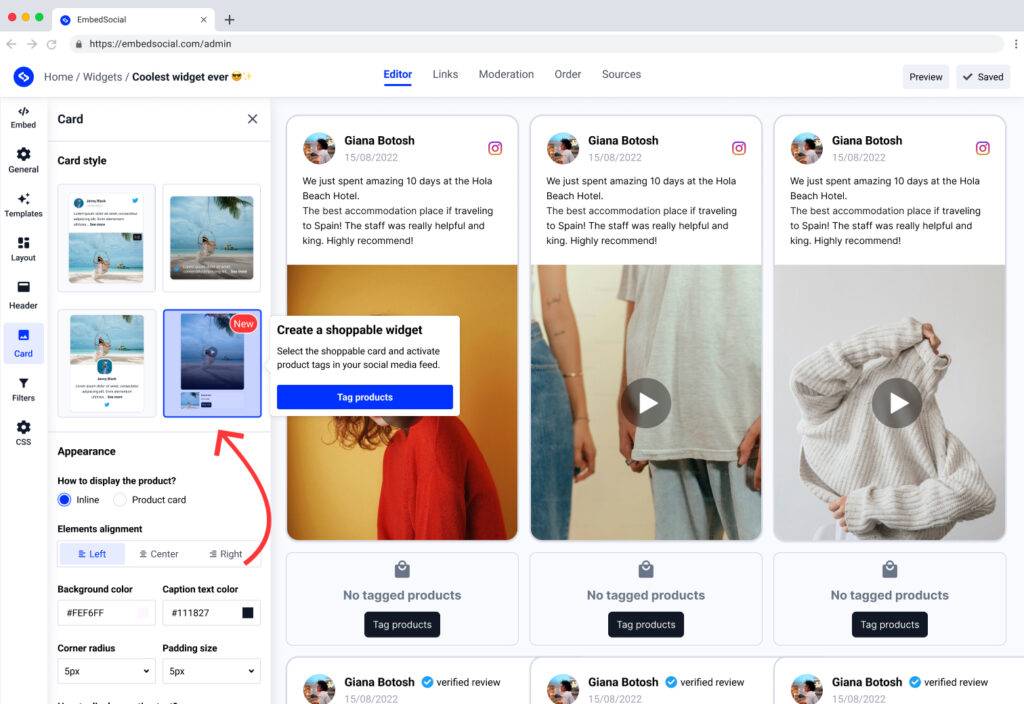
You can also start tagging all your products via the ‘Links’ tab found at the top ribbon. After accessing it, you have to tap ‘Tag products’ above each post that contains an actual product you are selling.
Then, you have to fill out a few details, including the product URL (to your store), its name, the current price, and a product image:
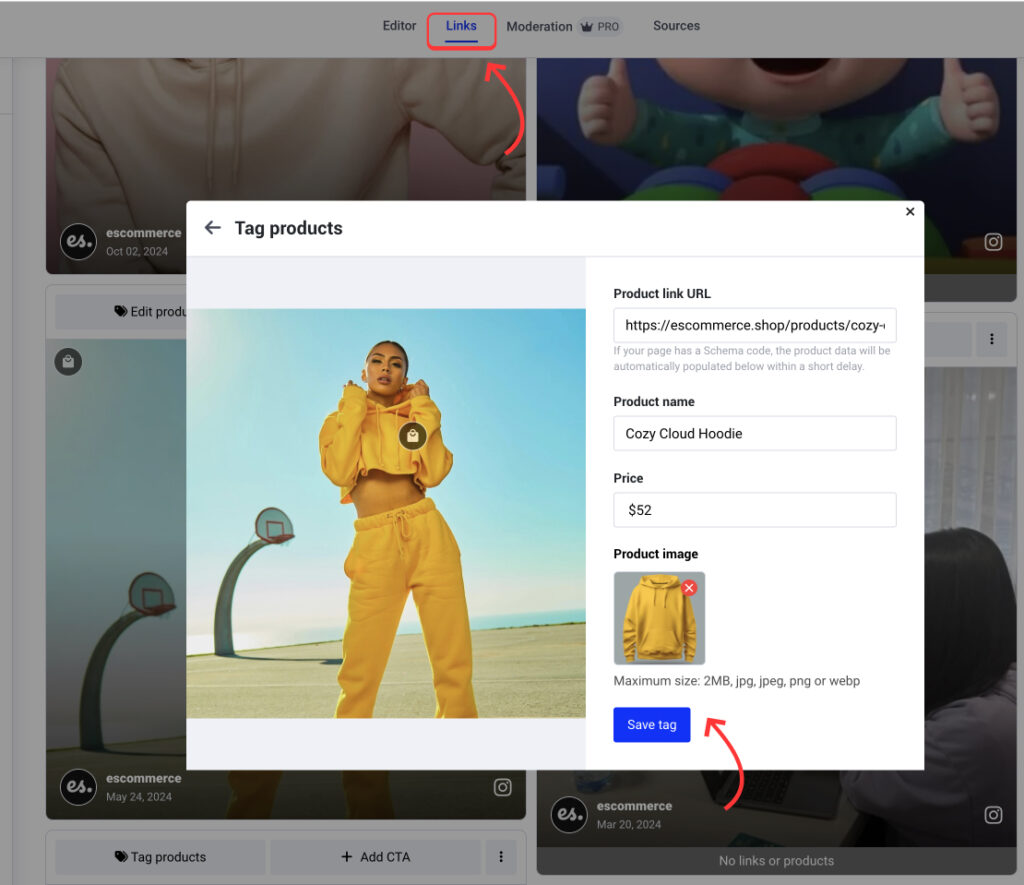
You can repeat the above step and tag multiple products in one post. The tagged products will appear when you click on the specific pin on the image, with a link to checkout.
Step 6: Finish customizing your widget
Even in the free version, you get access to all the settings you need to set up the perfect shoppable posts, such as adding all the product tags you need and using customization settings such as:
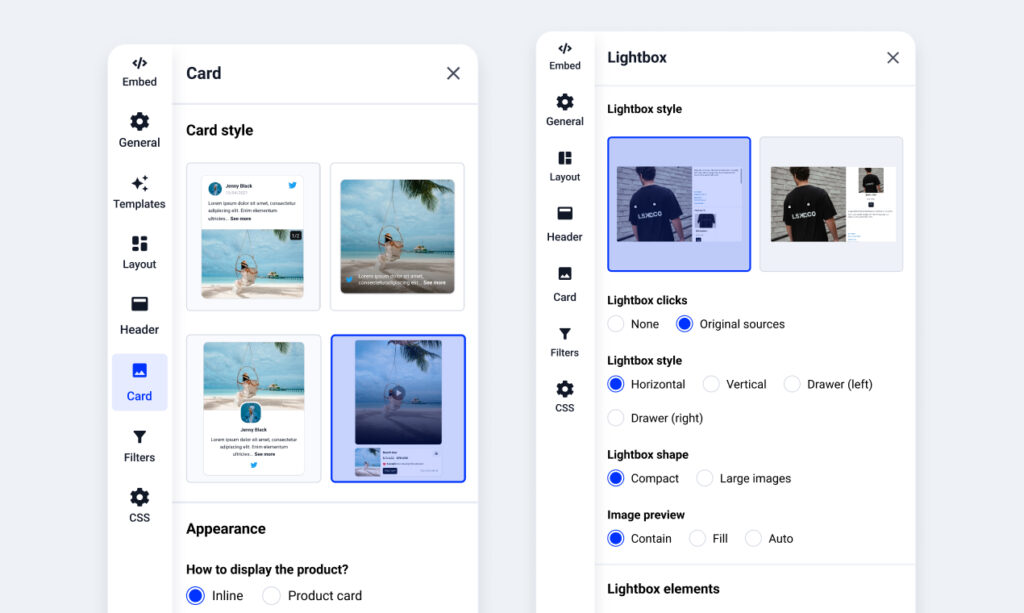
- Header settings
- Card settings
- Layout settings
- Lightbox settings
- Product tagging settings
Step 7: Embed the Shoppable widget on your website
Now you are ready to show everyone your fantastic new widget. To do that, tap ‘Embed’ (top-left corner) and ‘Copy code’ to get the embeddable widget code:

Once you get the code, you only need to open your website editor, place a custom HTML block on the page where you want the widget to appear, and paste the code.
Read more:
EmbedSocial’s shoppable widgets benefits
Why should you choose our social commerce widget over others? Well, we pack all the best goodies even in the platform’s free version. Plus, you get all this:
- Embeddable code that works for any web builder or e-Commerce platform – unlike other similar widgets, EmbedSocial doesn’t require you to install or future maintain an app for Shopify WordPress or any other platform. Just paste one code, set it, and forget it. You will be able to manage everything, from product tagging to analytics, within your standalone account in EmbedSocial.
- Widget layouts – choose collage, lider, feed, or masonry layout. Depending on your use case, you can create multiple widgets with different layouts to embed them on different pages.
- Shoppable UGC – Since our widget is clickable and links back to the actual product you see on the image, you’ll get to navigate visitors to checkout and convert them faster to buyers..
- Design optimized for all devices – you get a responsive design that works great on both desktop and mobile for seamless browsing and shopping;
- Super fast loading times – our widgets load incredibly fast, which prevents user frustration and cart abandonment. You get your customers buying right away;
At the end of the day, you want affordable, flexible, and powerful shoppable content widgets that you can easily embed on your website to convince your customers. You achieve all that and more with EmbedSocial’s newest shoppable widgets.
Example of shoppable widgets
Are you wondering how these widgets would look on real web pages? Here’s a great example of an e-commerce widget created via EmbedSocial:
‘Shop my look’ widget
This is a most common widget for apparel brands, where the use case shows how real people wear the actual products and inspires potential customers to browse and find their perfect match. This stimulates the understanding of how particular clothing can look for their size and influences faster purchase decisions – with a single click to check out from the widget.

Shoppable widget with Instagram Reels
this widget displays Instagram videos where the products used in the videos can be purchased directly from the product cards displayed below each video:

How shoppable UGC drives ROI for e-commerce
Shoppable posts aren’t just a trend; it’s a proven way to increase your e-commerce store’s ROI. By combining authentic user content with direct shopping opportunities, you’re able to build customer trust and convert more browsers into buyers.
Here are the key ways shoppable UGC can drive ROI for your business:
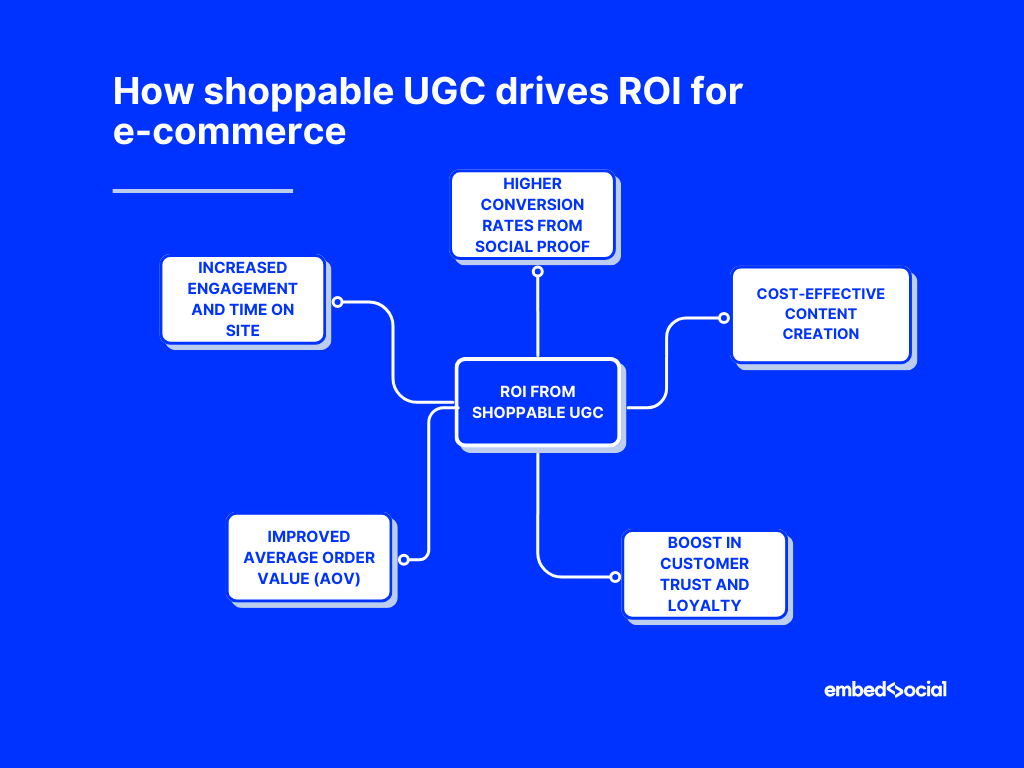
- Higher conversion rates from social proof—seeing real customers using your products encourages others to buy, leading to more sales;
- Cost-effective content creation—leveraging UGC reduces the need for high-budget marketing campaigns, as your customers provide the content;
- Boost in customer trust and loyalty—customers are more likely to buy from brands that display real user experiences and reviews;
- Improved average order value (AOV)—with a well-placed shoppable widget, customers are more likely to discover additional products, increasing the total value of their purchase;
- Increased engagement and time on site—engaging UGC encourages visitors to stay longer and interact more with your website, improving your site’s overall performance.
Ultimately, your e-commerce brand can tap into the power of user-generated content to maximize both engagement and sales, ultimately driving a higher ROI.
The future of shoppable e-commerce: What to expect in 2025
As e-commerce sites continue to evolve, shoppable content campaigns will play an even bigger role in how brands connect with customers and drive sales.
The shopping experience is becoming more integrated with shoppable social media posts and the line between content and commerce is almost invisible.
That said, here are my five predictions of its evolution:
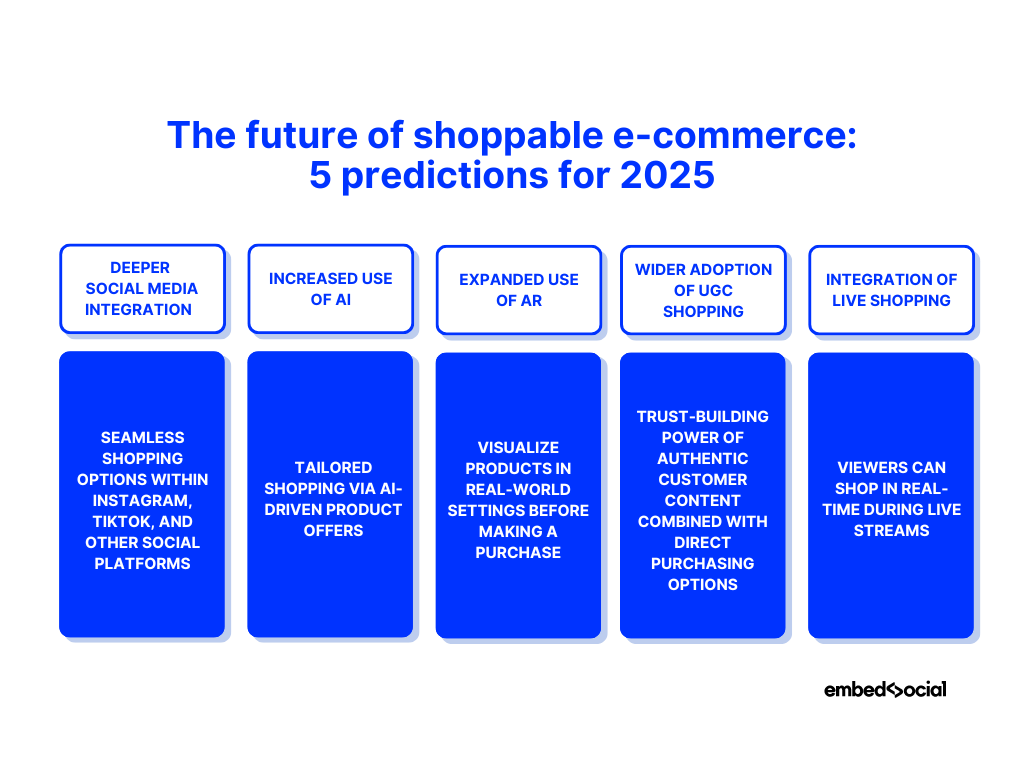
Prediction #1: Deeper integration with social media platforms
More seamless shopping options within Instagram, TikTok, and other social platforms will allow users to shop without ever leaving the app. This integration will make it easier for consumers to discover shoppable images while checking their social media channels.
Prediction #2: Increased use of AI and personalization
AI-driven product recommendations and personalized shoppable content will deliver tailored shopping experiences based on customer preferences. This personalization will make it possible to offer customers exactly what they want at the right moment.
Prediction #3: Expanded use of AR (Augmented Reality)
Shoppable AR experiences will allow customers to visualize products in real-world settings before making a purchase, enhancing their confidence in the product. Whether it’s trying on clothes or seeing how furniture fits in a room, AR will create an immersive experience.
Prediction #4: Wider adoption of UGC-powered shopping
UGC will continue to dominate as more brands realize the trust-building power of authentic customer content combined with direct purchasing options. Consumers will feel more confident making purchases when they see real people using and endorsing products.
Prediction #5: Integration of live shopping features
Interactive live shopping, where viewers can shop in real-time during live streams, will become a common tool for brands to showcase products. This format will allow for real-time engagement and instant purchases, providing a more dynamic shopping experience.
Conclusion: Make shoppable UGC a part of your 2025 strategy
Since online shopping is being redefined, integrating shoppable e-commerce widgets into your store is no longer a luxury but a necessity. After all, you can create a seamless shopping experience via e-commerce UGC management practices.
That way, you significantly enhance customer engagement, boost trust, and drive social commerce sales. So, whether you’re looking to build loyalty or improve the visual appeal of your website, shoppable widgets are the tool to do all of that.
Now is the time to leverage the power of EmbedSocial’s flexible and user-friendly shoppable widgets to stay ahead. Don’t miss this opportunity to make your e-commerce store more dynamic via shoppable user-generated content.
FAQs on shoppable UGC and widgets
What is shoppable UGC?
Shoppable UGC refers to customer-created content like a social media post, photos, or reviews that feature products and include shoppable links, which allows customers to buy directly from the content they see, providing a connection between discovery and purchase.
How do shoppable UGC widgets work?
Shoppable UGC widgets pull user-generated content from platforms like Instagram, Facebook, or TikTok and embed it on your website. The widgets also include links to the featured products navigating users to your store and enabling them to make a direct purchase.
How can shoppable widgets benefit my e-commerce store?
Shoppable widgets enhance customer engagement, streamline the shopping process, and increase conversion rates by turning regular content into clickable, shoppable experiences. Plus, they boost trust by showcasing real customer experiences, which drive more sales.
What makes EmbedSocial’s shoppable widgets unique?
EmbedSocial’s shoppable widgets offer flexibility and deep integration with various social media platforms, allowing you to showcase UGC from multiple sources. The widgets are fully customizable, making it easy to design interactive, visually appealing content that fits seamlessly into your e-commerce site and includes your brand colors.
